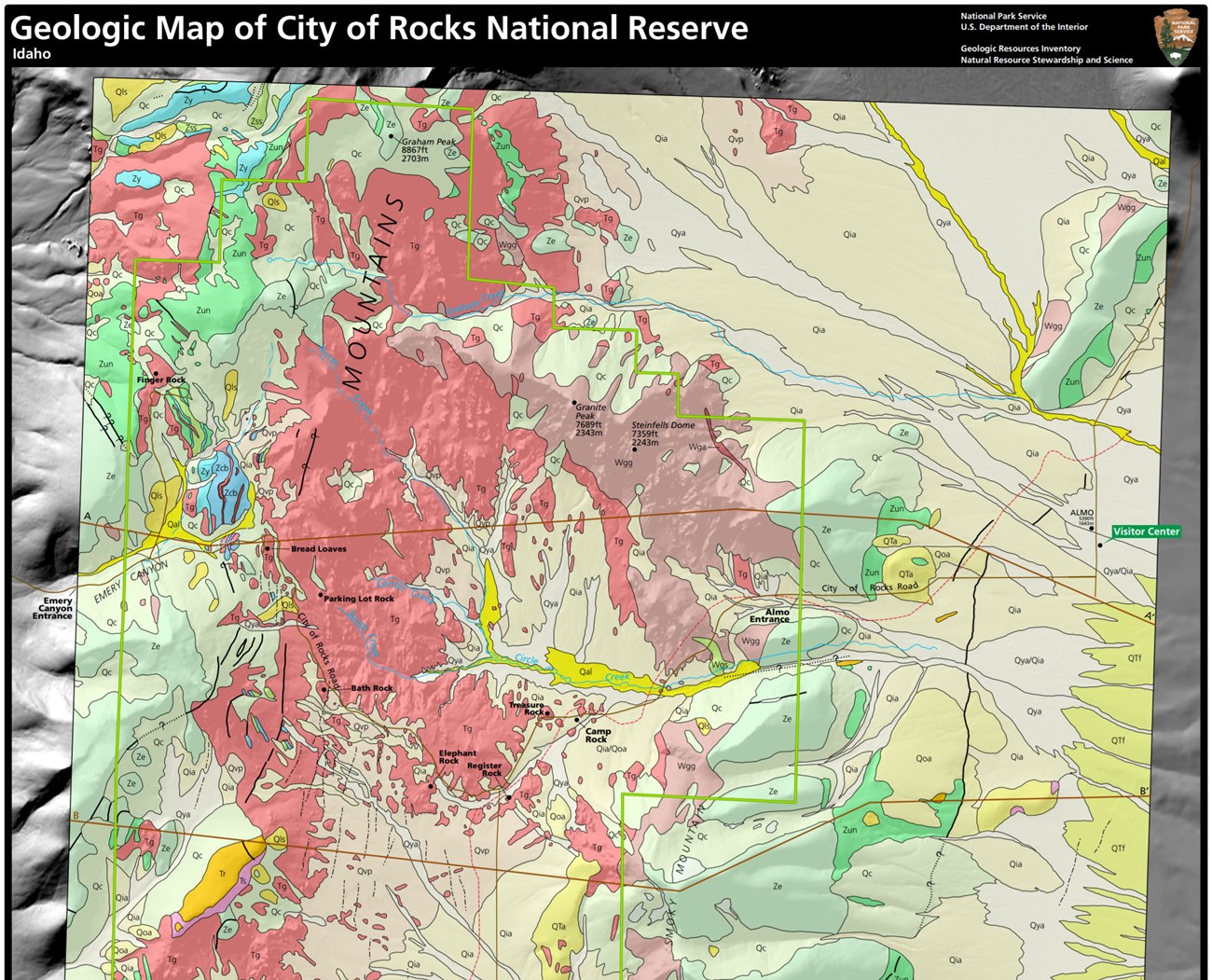Last updated: June 14, 2024
Article
NPS Geodiversity Atlas—City Of Rocks National Reserve, Idaho
Geodiversity refers to the full variety of natural geologic (rocks, minerals, sediments, fossils, landforms, and physical processes) and soil resources and processes that occur in the park. A product of the Geologic Resources Inventory, the NPS Geodiversity Atlas delivers information in support of education, Geoconservation, and integrated management of living (biotic) and non-living (abiotic) components of the ecosystem.

Introduction
City of Rocks National Reserve (CIRO) is located in the southern part of the Albion Mountains in Cassia County, south-central Idaho. Established on November 18, 1988, CIRO encompasses approximately 5,830 hectares (14,407 acres) of scenic geologic landscape containing naturally sculpted granitic spires and domes considered significant to the Northern Shoshone people. The reserve centers on three upland valleys or basins (Circle Creek Basin, Twin Sisters Basin, and Emigrant Basin) that are underlain by broad erosional plains cut into the granite and surrounded by high mountains to the east and west that are carved by narrow canyons (Thornberry-Ehrlich 2010). CIRO was created to preserve and protect the scenic qualities and attributes of the California Trail landscape, historic rural setting, and granite features, while interpreting its values and managing recreation (National Park Service 2018).Geologic Setting
The geologic features of CIRO are world-renowned, both for rock-climbing enthusiasts and academic research purposes. The landscape of the reserve is home to rare, densely spaced granite spires and domes that led to the designation of its national natural landmark status. The geologic formations and landforms at CIRO provide opportunities for scientists to observe and understand 1) ancient and recent tectonic events that uplifted the mountainous interior of the western United States; and 2) surficial weathering processes that shape the landscape and reveal buried rocks and structures (National Park Service 2018). The bedrock geology of CIRO predominantly consists of igneous and metamorphic units (Figure 8), including some of the oldest rocks in North America: metamorphosed igneous rocks associated with the Archean Green Creek Complex are more than 2.5 billion years old (Thornberry-Ehrlich 2010). Juxtaposed against the Green Creek Complex is the Oligocene-age Almo pluton (~28 million years old), a contact that represents an age gap of billions of years.Abandoned Mineral Lands
NPS AML sites can be important cultural resources and habitat, but many pose risks to park visitors and wildlife, and degrade water quality, park landscapes, and physical and biological resources. Be safe near AML sites—Stay Out and Stay Alive!
Regional Geology
City Of Rocks National Reserve is a part of the Columbia Plateau Physiographic Province and shares its geologic history and some characteristic geologic formations with a region that extends well beyond park boundaries.
- Scoping summaries are records of scoping meetings where NPS staff and local geologists determined the park’s geologic mapping plan and what content should be included in the report.
- Digital geologic maps include files for viewing in GIS software, a guide to using the data, and a document with ancillary map information. Newer products also include data viewable in Google Earth and online map services.
- Reports use the maps to discuss the park’s setting and significance, notable geologic features and processes, geologic resource management issues, and geologic history.
- Posters are a static view of the GIS data in PDF format. Newer posters include aerial imagery or shaded relief and other park information. They are also included with the reports.
- Projects list basic information about the program and all products available for a park.
Source: NPS DataStore Saved Search 2790. To search for additional information, visit the NPS DataStore.
A NPS Soil Resources Inventory project has been completed for City Of Rocks National Reserve and can be found on the NPS Data Store.
Source: NPS DataStore Saved Search 2844. To search for additional information, visit the NPS DataStore.

Related Links

